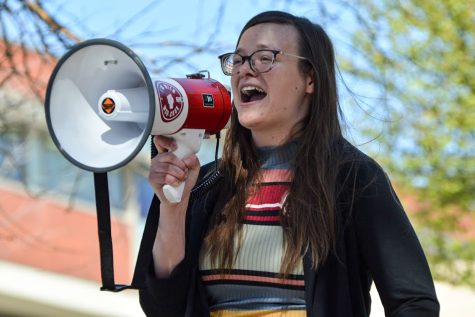Guest editorial: College costs, student debt should be priority
March 22, 2016
I recently heard from a WSU student named Robyn. Robyn is a senior biochemistry major and works more than 25 hours a week to get by. Despite Robyn’s hard work in and outside the classroom, she will graduate in winter with more than $30,000 in student debt, she said she is worried that graduate school will hike up that number even more.
The high costs of college and student debt are holding too many students, like Robyn, back.
Last month I asked students to tell me what they’re going through, because I consider it to be one of my most important jobs as a U.S. Senator to make sure people in Washington state can make their voices heard in our nation’s capital. It’s one part of my effort in Congress to combat rising college costs and make sure students can graduate without the crushing burden of student debt.
Across the country the yearly costs of tuition and room and board at a public, four-year institution is five and a half times what it was in the early 1980s. Overall, nearly 42 million Americans hold more than $1.3 trillion in student loan debt. In fact, every second, student debt in our country grows by nearly $3,000.
That’s why I support legislation to help students attend community college, tuition free. I want to make sure more students can take advantage of financial aid, especially need-based aid that helps keep debt down, like Pell Grants. We should also let borrowers refinance their student debt to today’s lower rates. And to pay for these solutions, we should finally close some of the most egregious special interest loopholes that right now, only benefit the biggest corporations and the wealthiest few.
These solutions should be a national priority. When more students are able to further their education, it doesn’t just help them. A highly educated workforce helps our economy grow from the middle out, not the top down. And it strengthens the workforce we’ll need to compete and lead the world in the 21st century economy.
For me, this isn’t just another issue. It’s personal. When I was young, my father was diagnosed with Multiple Sclerosis. Within a few short years, he could no longer work, and without warning, my family had fallen on hard times. Thankfully, my brothers and sisters and I went to college with help from what are now known as Pell Grants. And my mom was able to get the skills she needed to get a better paying job through a worker training program at a vocational school, Lake Washington Institute of Technology.
Even through those hard times, we never lost hope that with a good education, we would be able to find our footing and earn our way to a stable middle class life. Today, we can’t turn our backs on the millions of students who need a path forward to afford college and pay back their student debt.
Over the next few months, I want to keep hearing from students at Washington State University (murray.senate.gov/collegeaffordability). And I’ll continue to work hard in the Senate to make sure higher education and earning a ticket to the middle class is a reality for more students in Pullman and across Washington state.




















